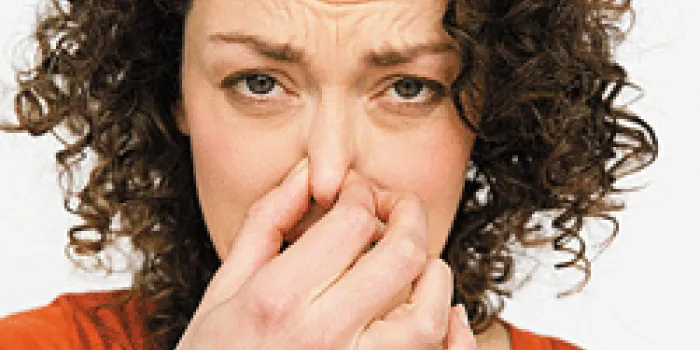A glass-walled office offers no privacy when you’re hunched over a trash can with a nosebleed. So says Michelle Cecil, past president of the United Students in Residence Halls at the University of Wisconsin-Oshkosh. For the 2015 communication studies graduate, bloody noses are the most public symptom of her type 1 von Willebrand disease (VWD). “There were times when I became very self-conscious, especially when people who didn’t know me or understand what was going on were staring,” Cecil says.
Nosebleeds can be more than a nuisance for women with bleeding disorders. Fortunately, there are ways to relieve symptoms and correct chronic problems.
The nose
Your nose is lined with a mucous membrane and contains blood vessels that warm the air you inhale. Most nosebleeds originate in a network of arteries near the front of your nose that is easily injured. Trauma, allergies and high blood pressure also can cause nosebleeds. So can swimming in a chlorinated pool.
Stop it now
“The most effective way to stop a nosebleed is direct pressure on the septum,” says Jose Manaligod, MD, associate professor of otolaryngology (an ear, nose and throat [ENT] specialist) at the University of Iowa Hospitals and Clinics in Iowa City. Pinching the nostrils this way or using nose clamps encourages clot formation. But you have to do it for 10–30 minutes. “Applying a vasoconstrictor (which narrows the blood vessels), such as Afrin® spray, also works,” he says.
Try ice on the bridge of your nose, says Jim Munn, RN, MS, program coordinator at the University of Michigan Hemophilia and Coagulation Disorders Program in Ann Arbor. He is a co-author of the National Hemophilia Foundation’s (NHF’s) Nosebleeds brochure. Nosebudd™, a nasal icepack invented by a man with hemophilia, may also help. “It gives you both the ability to pinch, as well as have the icy part, which helps with vasoconstriction,” Munn says.
Some patients swear by salt pork. After rolling pieces of the raw meat into nostril-sized cylinders, you freeze them in a plastic bag. When ready to use, coat them with a lubricant and gently tuck them inside your nostrils for about 30 minutes.
Several prescription medications come in handy. Stimate (desmopressin acetate, or DDAVP) Nasal Spray® stimulates clotting in mucous membranes. It’s used in patients with VWD and mild hemophilia A. Amicar® (aminocaproic acid) is taken orally to prevent clot breakdown in mucous membranes. Over-the-counter options include NasalCEASE®, a nasal packing material, and NosebleedQR®, a powder. Several creams, foams and gels also aid in clot formation or prevent its breakdown.
After a nosebleed, take it easy. Avoid rigorous physical activity and stay away from hot foods. Gently blow your nose afterward, but don’t close one nostril. “That’s more pressure and it could start the process all over again,” Munn cautions.
En route to the ER
Call your hemophilia treatment center (HTC) to determine when to head to the emergency room (ER). “Anytime you’ve had a nosebleed that is not responding for more than an hour or if the blood is pulsating (fluctuating with your heartbeat), you want to get to the ER as quickly as possible,” says Munn. There, the medical staff may put packing in your nose, which exerts pressure on the blood vessels to arrest bleeding.
Cauterization time
Kinzie Hemann of Reinbeck, Iowa, had recurrent nosebleeds from her type 3 VWD, the severest form. “She had a few that would not stop even with factor,” says her dad, Josh Hemann. It was time to consult an ENT.
ENTs can seal ruptured blood vessels in the nose using chemical, electric or laser cauterization. “Our first line of defense is to use silver nitrate, a mild chemical, which we roll over the blood vessels,” says Manaligod. “For patients with bleeding disorders, we work hand in hand with the hematology department to create a treatment plan,” he says.
In 2013 when she was 3, Kinzie had her first cauterization. A year later, the nosebleeds returned with a vengeance—more than a dozen in a two-month period. Since a second cauterization in December 2014, the kindergartner has had only one minor nosebleed. “Her quality of life has been a lot better,” says her dad.
Know your nose
Moisture is key in preventing nosebleeds. Plug in a cool-mist humidifier and dab some petroleum jelly in your nostrils. “You can squirt Ocean® Saline Nasal Spray, which is just salt water, four to five times a day to make sure the mucous membranes are staying moist,” says Munn. Drinking water, sports drinks or other fluids also helps hydrate your body, he adds.
“Be self-aware of your body and what triggers bloody noses,” says Cecil. “Know your history so you know how to act on it.”

